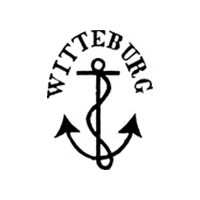
Image 010501-01-01
Used between 1852 and around 1905. An anchor topped by "Witteburg". This basic stamped form was mostly applied in blue.
Due to a the lack of natural resources the region around Bremen can not be described as a typical earthenware production area. As Bremen was (and still is) a very large sea port, the existence of potteries there depended on the transports coming from England, delivering all that was needed for a small community of facilities of which some produced fairly nice earthenware. But the market itself showed no particular interest and the first potteries soon closed again. Around the year 1800 the last factory which was located in Lesum near Bremen and owned by Johann Christoph Vielstich closed and more and more cheap imports from England were released into the market through companies located in the sea ports, distributing the goods throughout Germany.
Around 1850 the situation changed dramatically after Germany introduced the Customs Union, drastically increasing duty on nearly all imported products. Up until then the earthenware imported from England (where it had been invented during the year 1725) was the cheapest available in Germany. The nearly endless stream of underpaid workers in England made it possible for companies in England to produce and export the earthenware for far less than a German company could afford.
Of course the new duties ruined the market for English salesmen but enabled German manufacturers to step into direct opposition with British manufacturers, slowly gaining back ground on their own home market. The time chosen could not have been better. At that time, the demand for cheap tableware was high, especially as the earthenware manufacturers had managed to create mixtures that easily reached a quality that was directly comparable with the much more expensive porcelain.
The German strategy of raising the duties literally paid off perfectly as now it was cheaper to simply import the needed raw materials from England and produce items locally. One person who had a close eye on this market was the shipowner W.A. Fritze from Bremen, who saw the opportunity to not only earn money by transporting the raw materials for other companies but also by producing items himself - of course using the raw materials he himself imported from England.
As his position as a shipowner constantly required his presence, Fritze decided to transfer the responsibility for the new business to his son Johannes Fritze, who also received a larger amount of money to get started. It did not take long for the young Johannes Fritze to set up a meeting with the renoved Simeon Sowerbutts, a British earthenware dealer and wholesaler who owned the company of Simeon Sowerbutts & Co. in Bremen. His experience in the production of earthenware as well as his knowledge of facility technology should prove as great help, and Sowerbutts himself knew that the earthenware trade with England was going to chease completely.
But they still needed more funds and local support and so the two decided to contact the town mayor of Farge, who also owned a large iron and copper wholesale business and himself was an Englishman: James Bethuel Boyes. They came to an agreement very easily and so they decided to found a stoneware factory in Farge, chosing the name "Witteburg" to commemorate the destruction of the Witteburg castle in 1227 which had belonged to the archbishop of Bremen (Gerhard II) and had served as toll collecting station.
Construction of the factory itself which was completely built by Englishmen under the supervision of Simeon Sowerbutts included leveling a large area including a former train oil facility next to the river Weser and cost an impressive 11,000 Goldthaler (old gold coin currency). The factory was finally opened on 16. October 16th 1852, featuring two normal kilns and three glazing kilns.
Sowerbutts as technical director of the factory instantly started solving the few problems every new facility faced and used his contacts to acquire some specially skilled workers from England. In 1853, the factory already supported a workforce of 150 people, half of them either being from England or Englishmen that had been living in and around Bremen. To support the imported skilled workers as well as making it easier for the other English workers from around Bremen, the company even built an own working-class estate, which today still is officially named the Kolonie ("colony") and was nicknamed Englische Reihe ("English row") by the townsfolk.
For the first four years, the German workers were carefully instructed by their English co-workers and foremen who later either went home to England or stayed in Bremen. One example of for people staying in Bremen was the copperplate engraver Richard Taylor who, together with his son Richard Taylor jr. (who later also became town mayor of Farge) actually was responsible for the most decoration styles on Witteburg products.
The reason for Taylor being so vital in the effort of achieving success is quite obvious: decorations during that period were transfered via a kind of 'tissue paper' which had before been printed with the decoration. The printing plates, and of course the designs themselves, where made by the copperplate engravers. Of course, during the initial phase of the company the Witteburg products not only had to stand up against the still incoming English products price-wise (even if the odds had changed in their favour), they also had to be similar in design to please the customers who until had loved the imported goods. The decoration styles used on item from England were modified versions of Chinese and Japanes designs, and Richard Taylor and his son were quite capable of suppliying the Witteburg factory with such.
One can imagine that especially during the first years, all designs showed a massive Japanese and Chinese influence, and some pieces even were produced up until 1920. Most of these pieces were marked with a rather confusing "Weser" addition (as can be seen in the marks section of this document). Today, no-one can say for sure if that actually was the decoration style name, or simply the statement that the Witteburg factory was 'upon Weser' (the river Weser flows through Bremen), just like some pieces from other manufacturers used, just like items from Franz Anton Mehlem (located in Poppelsdorf near Bonn) frequently display "Rhein" for the river Rhine.
Naturally, also a larger amount of other decorations were used, especially during the later years as the company had become more established and the market had changed in way that more and more people wanted something different. The local museum still owns an impressive collection of original transfer sets which were used by the factory.
As a side note, it should be mentioned that the increasing success of the Witteburg factory even convinced other investors and businessmen from the city of Bremen and the town of Vegesacker, who founded the Norddeutsche Steingutfabrik in 1869, but because of the war of 1870/71 they had to start production a full two years late and soon fell way behind expectations even though the crockery produced was nearly the same as from the Witteburg factory. In some cases the items are only distinguishable via the used base marks, a result of the first factory directors (Scherenberg and Springer) both being former Witteburg employees. At first, the situation of the Norddeutsche Steingutfabrik was very dire indeed, but they soon started to gain on the Witteburg factory.
Business itself constantly increased and on April 22nd 1898 the company was changed into a (stock) corporation and experiments with various types of products started. As shown in a catolog from 1900 (which includes 270 pictures), the product range had drastically increased over the years, now also including match holders and strikers, ink wells, cuspidors and lamp bases as well as shop windows displays and small advertisement signs.
But a short time later it was decided to concentrate on one project only as the market slowly changed yet again, now increasingly preferring porcelain items. The total change in production finally came in the year 1905 when three new kilns were built to enable the large scale production of colorfully glazed wall and floor tiles, but from 1907 onwards the whole business constantly declined and when the first signs of World War I were visible in 1914, the board of directors decided to completely shut down the factory.
The locked up factory was left under supervision of a few watchmen until 1919 when the whole factory was bought by the Norddeutsche Steingutfabrik. Under new management and after modernization, work was taken up in the factory at the end of the same year. Over the period of time until 1939 the factory was slowly converted into a facility specialized on floor tiles, but production had to be halted during World War II. After the war there was such a large demand that the facility was nearly instantly reopened.
The action did not last long as in the first months of 1952 work was stopped again as the economic situation of the whole area had decreased. It took a few months before the town of Bremen and the Norddeutsche Steingutfabrik in a combined effort tried to help the many unemployed people and so the facility was reactivated on October 8th 1952, offering work for 130 people at a full 48 hours per week. This was a great effort; in comparison, the neighboring Spinnbau GmbH textile machinery company had to put 200 of 900 employees on short-time work.
But for the factory in Farge time was running out. In 1957 the Norddeutsche Steingutfabrik decided to restructure their whole company and so the main business together with its subsidiaries Bremer Wandplatten Fabrik GmbH (founded 1912) and the Grohner Wandplatten AG (founded 1906) was regrouped as Norddeutsche Steingutfabrik Grohn AG. That was the end of the Witteburg facility, and it was closed and demolished a year later. The former premises later became the location of the hard-coal fired 345MWatts Farge powerplant.

Image 010501-01-01
Used between 1852 and around 1905. An anchor topped by "Witteburg". This basic stamped form was mostly applied in blue.
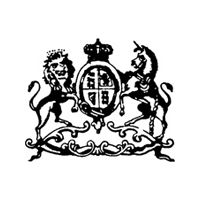
Image 010501-01-02
Used between 1861 and 1866, basic mark view of the "Tocal Stone China" mark.
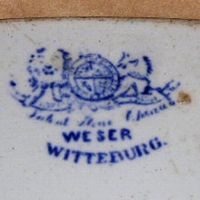
Image 010501-01-03
Used between 1861 and 1866, "Tocal Stone China" crest above "Weser" and "Witteburg".
(Picture: Adams1986)
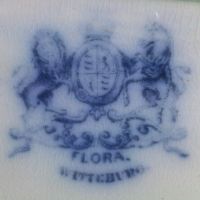
Image 010501-01-04
Used between 1861 and 1866, a British-looking crest above "Flora" and "Witteburg".
(Picture: Mathias Eichner)
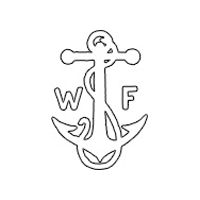
Image 010501-01/02-01
Used between 1852 and 1914, an anchor flanked by the initials "W" and "F" for "Witteburg" and "Farge".
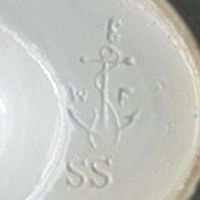
Image 010501-01/02-02
Used between 1852 and 1914, example of the impressed anchor mark.
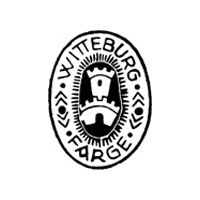
Image 010501-03-01
Used between 1919 and 1957.

Image 010501-00-01
No date known: tile back reading "Steingutfabrik Witteburg Farge / Weser".
© 2004-2025 C.S.Marshall, all rights reserved